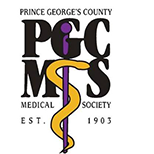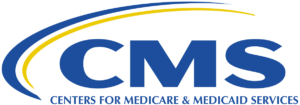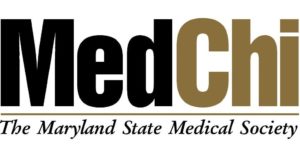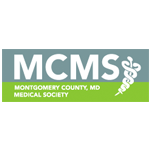COVID 19 Business Relief ResourcesListed below is information from the U.S. Department of Treasury, Business Administration, and the Small Business Development Center. It includes: - Information on what steps to take to financially secure your medical practice with available state and federal and state relief funding resources
- Frequently asked questions about federal and state funding.
You can currently apply for state funding and federal funding from the Small Business Administration and the CARES Act will start taking applications on Friday, April 3. What should I do to secure my practice financially?What should you do first to secure your business during this pandemic? Remember, this relief funding and emergency resources are supplemental. So before you apply for state and federal loans discussed here, businesses are recommended initially to talk to your creditors for deferral, abatement or waiver of expenses. Also, call your business insurance provider to ask if your policy includes business interruption coverage. Most insurance policies have exemptions for acts of God, so a pandemic would qualify as an exemption, but it is still worth a call. Lastly, each practice should consult their tax attorney/accountant. What if I don’t have perfect credit – should I apply to these resources?You are recommended to apply no matter your credit rating. An advantage of the PPP is it gives full discretion to the bank, which means no SBA credit review, drag or oversight. Both EIDL and PPP can be denied on account of your credit, but the threshold is very reasonable. Don’t let it be a barrier to applying. FEDERAL RESOURCES
CARES Act: Payroll Protection Program
Small Business Administration Economic Injury Disaster Loan (EIDL)On March 27, Congress passed the Coronavirus Aid, Relief, and Economic Security (CARES) Act. The CARES Act provides economic relief for businesses experiencing a temporary revenue loss due to COVID-19. Congress released 2 trillion dollars in aid with CARES as way to help businesses. The flagship program of CARES is the Paycheck Protection Program (PPP), which can be used to cover payroll costs to your business. Unlike the Economic Injury Relief Loan (discussed below), which is funded through the Small Business Administration (SBA), the PPP is applied for from an SBA approved bank. Friday, April 3 banks will be ready to start accepting applications for the PPP. Another important aspect of the CARES Act for small businesses is that it expands eligibility for the SBA’s EIDLs. In early March, the SBA’s disaster loan program was extended to all small businesses affected by COVID-19, but the CARES Act opens this program up further and makes it easier to apply. The U.S. Chamber of Commerce issued this Emergency Small Business Loan Guide. CARES Act: Payment Protection ProgramHow do I apply?Banks are still getting the program up and running so they won’t be ready until Monday, April 6. Banks that are already approved SBA lenders may be quicker to get the loan program in place. The Treasury Department has released more details on the loans here. You will need to apply for the loan at an SBA approved bank on Friday, April 3, 2020. When can I apply for a PPP loan?Friday, April 3, 2020. April 10 for independent contractors. Right now the legislation is being communicated to lenders, so for full details contact an approved bank on Monday. Who is eligible for the CARES Act Payment Protection Program?The Paycheck Protection Program offers loans for small businesses with fewer than 500 employees, select types of businesses with fewer than 1,500 employees, 501(c)(3) non-profits with fewer than 500 workers and some 501(c)(19) veteran organizations. Additionally, the self-employed, sole proprietors, and freelance and gig economy workers are also eligible to apply. Businesses, even without a personal guarantee or collateral, can get a loan as long as they were operational on February 15, 2020. What does the PPP loan cover?PPP covers payroll costs defined as salaries, wages, commissions, employee benefits, like vacation, family and sick leave, group health insurance, and rent, utilities, compensation for the owner (core business costs). They cover payroll costs and employee benefits, mortgage interest incurred before February 15, 2020, rent and utilities under lease agreements in force before February 15, 2020 and utilities for which the service began before February 2020. What are the terms of the PPP loan?The maximum loan amount under the Paycheck Protection Act is $10 million, with an interest rate no higher than .5%. No personal guarantee or collateral is required for the loan. The lenders are expected to defer fees, principal and interest for no less than six months, but no more than one year. You have a maximum of 10 years to repay the loan. The PPP application calculates of one month’s payroll times 2.5 (250%) minus help you have received grants from other programs. The loan can compensate up to $100,000 per employee. For example, if an employee earns $150,000 the loan will only pay up to $100,000 of compensation. Can this loan be forgiven?This is a big bonus for applying to the PPP. Yes, small businesses that take out these loans can get some or all of their loans forgiven. Generally speaking, as long as employers continue paying employees at normal levels during the eight weeks following the origination of the loan, then the amount they spent on payroll costs (excluding costs for any compensation above $100,000 annually), mortgage interest, rent payments and utility payments can be combined and that portion of the loan will be forgiven. Any cost to date of the original loan for eight weeks is 100% forgivable. For example, if you determine your payroll is $20,000 per month, using the program’s calculations you receive 250% of your monthly payroll, you would receive a $50,000 loan. But due to loan forgiveness, you would owe nothing on the first 8 weeks of the loan and only owe the final $10,000 along with a .5% interest rate. Does forgivable mean taxable?Loan forgiveness is not taxable. What do I use to calculate my monthly pay roll?You will need to use your most recent business or personal taxes. Make sure you record every payroll expense. If you have not completed your 2019 taxes (due July 15, 2020), not a problem, then use your 2018 taxes. For sole proprietorships, you will use your Form 1040 Schedule C. Take your annual payroll cost and divide by 12 months, multiply by 2.5 (250%). This is the amount for which you can apply. SBA Economic Injury Disaster Loan (EIDL)This is a step-by-step breakdown of how to apply for an Economic Injury Disaster Loan from the Small Business Administration. Please note: Unlike the Payroll Protection Loan, this loan needs to be repaid. Here is the direct link to begin the loan application process. What are the EIDL terms?Eligible businesses many borrow up to 2 million can be borrowed at a 3.25% interest rate. The amount you can borrow is determined by business type, size and financial resources. Terms of up to 30 years are available with the first payment due 12 months after funds are issued. How can I use the EIDL funds?These are working capital loans that may be used to pay fixed debts, payroll, accounts payable, and other bills that could have been paid had the disaster not occurred. However, you can’t use the funds for expansions or making up for lost sales. There is a question whether you can role the portion of this loan into the PPP loan which is forgivable. We will update membership when we answer this question. Can I roll over my EIDL into the PPP?Yes, you can roll this SBA EIDL into the Payment Protection Program, which has a considerably better interest rate .5%, as opposed to 3.25%. What are the EIDL collateral requirements?Economic Injury Disaster Loans of over $25,000 require collateral. The SBA takes real estate as collateral when it is available. The SBA will not decline a loan for lack of collateral, but requires borrowers to pledge what is available. Given the severity of the COVID-19 pandemic and its economic impacts, the SBA will make reasonable efforts to work with applicants toward a favorable decision. When will I hear about my Economic Injury Disaster Loan approval?Usually within 24 hours you will receive confirmation. The online platform is performing very well, and no processing problems have happened. SBA plans for one week for a full response. How to Apply for an SBA Economic Injury Disaster Loan and Grant?This is a step-by-step breakdown of how to apply for an Economic Injury Disaster Loan from the Small Business Administration. Please note: Unlike the Payroll Protection Program (PPP) Loan, this loan need to be repaid. A breakdown of both loans can be seen here in this Emergency Small Business Loan Guide from the U.S. Chamber of Commerce. I applied, but did NOT receive the EEIG $10,000 grant? If you already applied for the EIDL and were not asked for consideration in the Emergency Economic Injury Grant (EEIG), part of the EIDLs which gives a $10,000 advance, unfortunately, you must reapply for your EIDLs. However, do so because the EEIG is a $10,000 is a grant. Even if you did not qualify for the EIDL you can still receive the EEIG’s $10,000. The SBA has updated the website and streamlined the process to help. Now you just have to check the box requesting the $10,000 EEIG advance. However, since we are talking about free money expect money to be reduced. That means you can’t double dip on the free money. Can I receive both the EEIG $10,000 grant and a PPP loan?Yes, but the $10,000 that you receive for the grant will be deducted from your PPP loan forgiveness. Step 1: Visit the SBA disaster loan website.Here is the direct link to begin the loan application process: https://covid19relief.sba.gov/#/. Note: Before entering any personal information, be sure you are on the real Small Business Association site at SBA.gov. Step 2: Verify eligibility.The SBA is relying on businesses to self-certify eligibility. This is a two-part verification process: - The first part certifies that your business falls within the parameters of the Economic Injury Disaster Loan (EIDL) Program. Choose the one description that fits your business.
- In the second part, you must certify that your business is not engaged in certain disqualifying activities. Review and check each of the boxes before continuing.
Then click the “Continue” button to be taken to the online application. Step 3: Provide business information.To complete this step of the online application, you will need several pieces of information pertaining to your business handy, including: - The legal and trade names of your business.
- Your Federal EIN number or Social Security number.
- Gross revenue and cost of goods sold for the 12 months leading up to January 31, 2020.
- The date your business was founded.
- The number of employees.
| 


